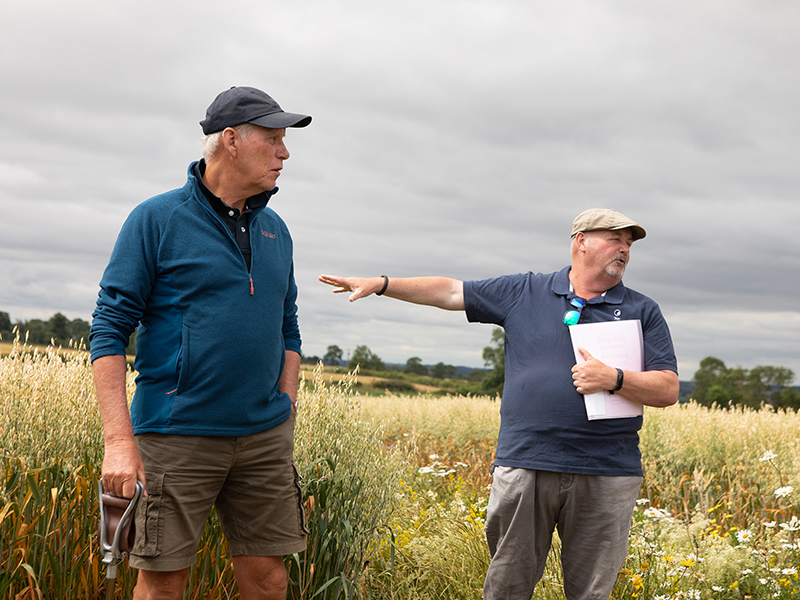A crop of oats grown with no inputs apart from seed and a companion crop of winter beans has produced an exceptional yield in Agrovista trials, opening the door to further research to help drive down growing costs.
Niall Atkinson, Agrovista’s farming systems R&D advisor, says: “The objective was to maximise winter oat production at least cost per tonne. The beans were included as a means to reduce inputs, particularly nitrogen. But we actually applied no inputs at all except seed.”
The plot at Agrovista’s trials site Lamport AgX in Northamptonshire follows several years of cover crops and spring wheat to get on top of blackgrass. The beans were direct drilled on 28 October 2021 at 38 seeds/sq m, followed by the winter oats at 340 seeds/sq m on the same day – full seed rates for both crops.
A conventional plot of oats alongside received 120 kg/ha N and commercial applications of pre-emergence herbicide, fungicide (x2), growth regulator and herbicide.
“The bi-cropped plot didn’t look particularly good for a while, but from May onwards it got better and better,” says technical manager Mark Hemmant. “In the end it yielded 9.36t/ha of good quality grain, only 0.5t/ha short of the conventional crop, and we got 0.42t/ha of beans into the bargain.”
Nitrogen offtakes were almost exactly the same for both plots of oats – 193kg/ha for the conventional plot and 191kg/ha for the bi-cropped oats, showing the effectiveness of the beans in supplying nitrogen.
Niall says the big question now is the potential for a long-term build-up of disease and pests, such as foot rot and stem nematodes in beans, from growing pulses too frequently.
“But, if you can grow this combination for no cost apart from seed, it opens up lots of questions,” he adds. “It may also be worth looking to see if other bi-cropping options can reduce the potential problems while cutting costs.”


